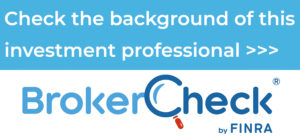National Homeownership Month: Celebrating The American Dream
June is a time to focus on homeownership strategies.
History of National Homeownership Month
When President Bill Clinton introduced the National Homeownership Strategy in June 1995, he launched what later became National Homeownership Month—a chance to promote opportunities to help families achieve homeownership. At the time, the homeownership rate was 64.2%, according to Census records. Clinton said he wanted America to increase its rate of homeownership to 67.5%—an all-time high at that point—within five years. According to Census figures, the homeownership rate rose to 67.5% by the first quarter of 2001. In 2004, homeownership reached 69%, but it began declining in 2008 due to the Great Recession. In the first quarter of 2022, the rate was 64.5%, according to the Census Bureau.
Current challenges for homebuyers
While owning your own home is part of the American dream, buying one can be a challenge—especially in the current market. Millennials now outnumber Baby Boomers, and many want to buy their first home. With the pandemic, however, a lot of homebuyers’ dreams have been put on hold. Soaring real estate prices, supply chain issues, a shortage of construction workers, and a dwindling inventory of available homes have thwarted plans for many would-be homebuyers.
Rising mortgage rates may soften demand and eventually lead to a decline in prices— but the housing shortage won’t disappear overnight. The National Association of Realtors reported in 2021 that between 2001 and 2020 the U.S. built (on average) 276,00 fewer homes per year than it did between 1968 and 2000. A research report by the Federal Home Loan Mortgage Corporation (commonly known as Freddie Mac) reported in 2021 that the housing shortage increased 52% between 2018 and 2020—from a shortage of 2.5 million to 3.8 million.
Helpful resources for potential homebuyers
The current housing market may seem challenging, but potential homebuyers may find hope in the resilience demonstrated during past housing shortages—such as the critical housing shortage after World War II. In his 2021 proclamation on National Homeownership Month, President Joe Biden emphasized his actions to extend foreclosure moratoriums, provide financial relief to homeowners who have fallen behind on mortgage payments during the pandemic, and promote the American Jobs Plan, which could support home construction and rehabilitation. The Federal Housing Administration (FHA) also updated its policy on student loans to provide greater access to affordable single-family FHA insured mortgage financing for creditworthy individuals with student loan debt.
For those who are interested in becoming homeowners, the U.S. Department of Housing and Urban Development (HUD) has compiled a helpful assortment of resources for every step of the home-buying journey. The topics include:
Determining how much you can afford to spend
Knowing your rights
Getting a loan
Homebuying programs
Selecting a home
Making an offer
Home inspections
Homeowners insurance
Closing the purchase
Those who are ready to dive into the homeownership journey may want to contact a HUD-approved housing counseling agency in their community to get started.
Thanks for checking out the blog.
Gregory Armstrong , CFP®
This material is for general information only and is not intended to provide specific advice or recommendations for any
individual. There is no assurance that the views or strategies discussed are suitable for all investors or will yield positive
outcomes. Investing involves risks including possible loss of principal.
This material was prepared by LPL Financial. Securities and advisory services offered through LPL Financial (LPL), a registered investment advisor and
broker-dealer (member FINRA/SIPC).
Insurance products are offered through LPL or its licensed affiliates. To the extent you are receiving investment advice from a separately registered independent investment advisor that is not an LPL Financial affiliate, please note LPL Financial makes no representation with respect to such entity.
Securities and insurance offered through LPL or its affiliates are: 









